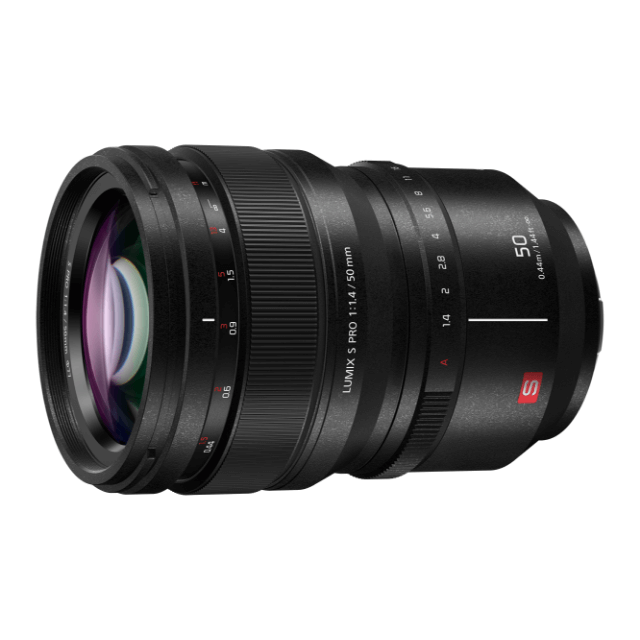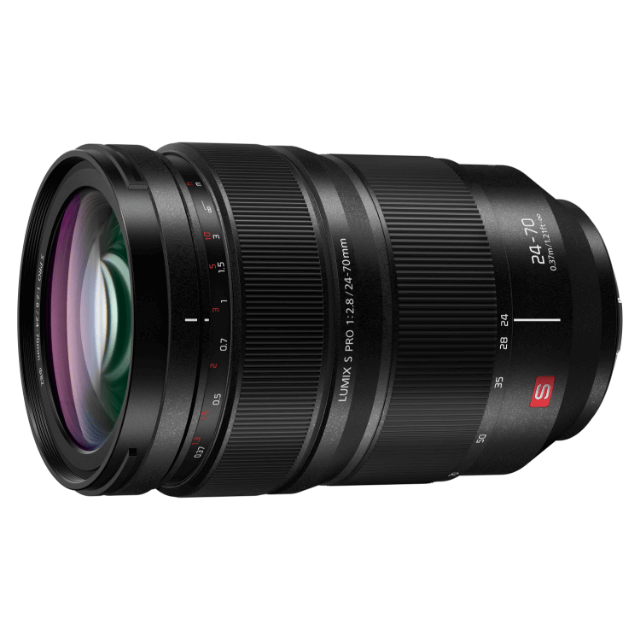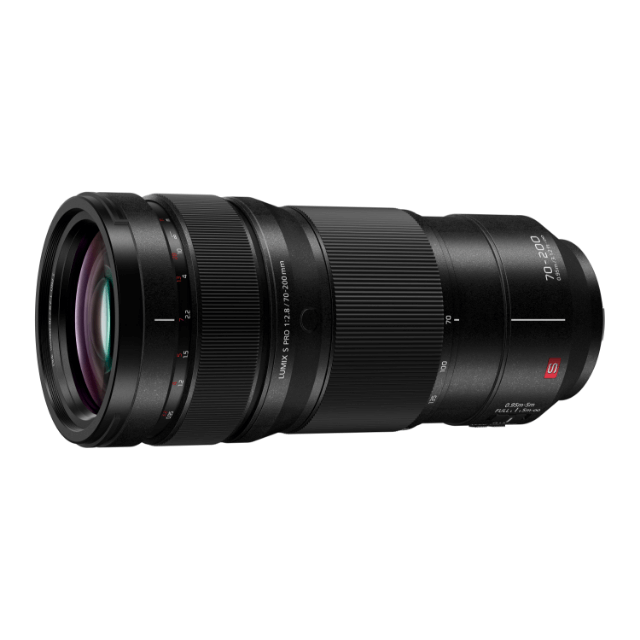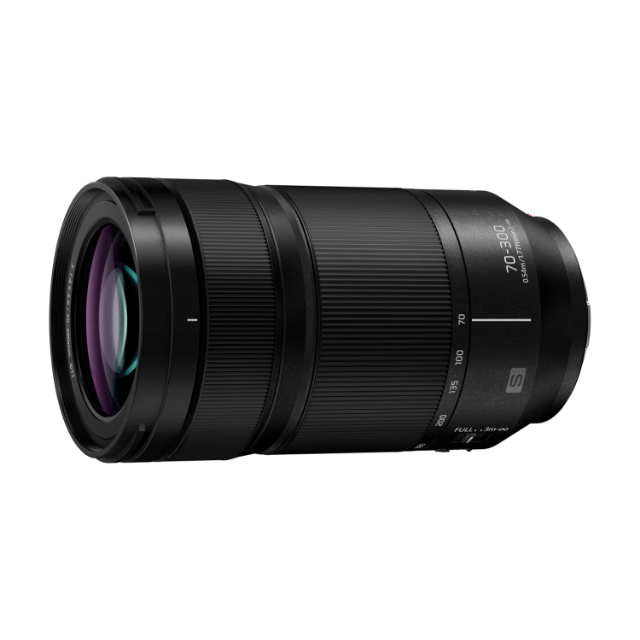
This is the Optical Design Department- Fifth Edition [LUMIX S F1.8 Series]
Hello, everyone.
In "This is the Optical Design Department", we in the Optical Design Department will explain the lens designs and their features, as well as the dedication and philosophy behind our work that you will not find in our catalogues or websites.
For those who are considering purchasing a camera lens, we encourage you to learn more about the design philosophy behind LUMIX lenses, and for those who already own a LUMIX lens, we hope you enjoy learning about the unparalleled attention to detail and thought that goes into the superb image quality you enjoy in your photography.
This is an article that explains various lenses written by developers full of technical jargon. By reading this, you too will be peering into the depths of enthusiasm for lens collecting.
In this fifth edition, we present five lenses from the prime F1.8 series: LUMIX S 18 mm F1.8, LUMIX S 24 mm F1.8, LUMIX S 35 mm F1.8, LUMIX S 50 mm F1.8, and LUMIX S 85 mm F1.8. This article is by Suzuki, who wrote the first article on the LUMIX S PRO 50 mm F1.4.
Contents
◼ F1.8 prime series
◼ Size consistency
◼ Consistent image rendering performance
◼ Consistent resolution performance
◼ Consistent colour tone
◼ Consistent bokeh
◼ Excellent performance in backlit conditions
◼ Suppression of lens breathing
◼ Standardised features
◼ Standardised size, controls, and centre of gravity: Keeping photographic equipment compact
◼ Fast, accurate, and quiet AF—Nimble AF
◼ MF usability—Customisable focusing ring to suit your shooting style
◼ Fewer discrete exposure changes during video recording—Superior video recording quality
◼ Lastly
F1.8 prime series
The F1.8 prime series are all lightweight and compact, ranging from an ultra-wide 18 mm to a medium telephoto 85 mm. These lenses can be used for everything from everyday snapshots to portraits.
The series is also based on the concept of changing the workflow of photography and video production, with a number of common features that will be explained later, making it a series with many advantages for both still and video photography.
This article explains the common features of the F1.8 prime series, including the key points of their optical design.
Size consistency

The F1.8 primes share a number of common features, the most important of which is consistent sizing.
The reasoning behind this consistency is that when the concept of offering multiple focal lengths for the F1.8 was first proposed, we held extensive discussions — not only about each individual lens, but also about how users would benefit from the series as a whole.
'When changing lenses, it's inconvenient having to prepare filters in different sizes if the filter diameter varies between lenses in the series.'
'If the sizes of the lenses differ, it's a hassle to choose a suitable camera bag and adjust the internal pads and dividers accordingly.'
'If the positions of focusing rings, switches, and other controls differ between lenses, there's a risk of unintentional operation, which can negatively affect the shooting experience.'
'When shooting professional video, swapping lenses requires rebalancing the gimbal, which can slow down the shooting process.'
These were some of the issues raised during our discussions.
This is because, when designing for optimal performance at each focal length, the ideal size and filter diameter naturally tend to differ. However, we realised that prioritising these small differences often worked against the overall consistency and usability of the lens series — more often than we initially expected.
As a result, we concluded that it would be better to standardise the controls, switches, and other elements, settling on a lightweight, comfortable size that fits naturally in the hand.
The key points of optical design when standardising lens sizes are the filter diameter and the overall length.
Of these, the filter diameter of the 18 mm F1.8 ultra-wide angle lens is the largest. For this reason, the 18 mm F1.8 is optically designed to keep the entrance pupil position as close to the subject as possible, so that the filter diameter can be kept to 67 mm despite the large aperture of the 18 mm F1.8.
The entrance pupil position is the image of the aperture formed by the optics on the subject side of the aperture. Put simply, this is the aperture you see when you look through the lens from the front element. When the principal ray is extended in object space without refraction by the optical system, the position at which it intersects with the optical axis is the entrance pupil position.
Next, in terms of overall length, from a qualitative point of view, it might seem that the 85 mm F1.8 telephoto lens would determine the overall length due to its focal length. However, because the ultra-wide angle lens is 18 mm, the number of lens elements required to correct aberrations is greater, making the 18 mm F1.8 the longest in terms of overall length, just as it determines the largest filter diameter.
The 18 mm F1.8 has three aspherical lens elements and four ED lens elements, effectively positioned to provide good aberration correction while keeping the overall length of the lens to a compact 82 mm.
The aperture unit and focusing motor — both actuator components that have a significant impact on the overall size of an interchangeable lens — are positioned in roughly the same location.
This mechanical layout not only helps to keep the lens diameter as compact as possible, but also plays a key role in maintaining a consistent centre of gravity and balanced handling.
Consistent image rendering performance
The F1.8 series is optically designed to ensure that each lens delivers excellent performance on its own, while also providing consistent image rendering when switching between lenses in the series.
To achieve this consistency, careful thought was given to the type of optical system that should form the foundation for the entire lineup.
After extensive discussions not only about the optical elements but also about other factors such as mechanisms and actuators, we settled on a lens configuration featuring a positive lens as the front element. This design makes it possible to achieve consistent image rendering performance across the different lens types within this size range.
The factors that determine image rendering performance are explained in the following sections.
Consistent resolution performance
The F1.8 series covers a focal range from ultra-wide to medium telephoto, while maintaining a high level of consistent MTF performance from the centre to the edges.
This is made possible by fully leveraging the aspherical and optical design technologies we have refined over the years, standardising the basic optical construction across the series, and optimising the arrangement of aspherical, ED, UED, UHR, and other lens elements according to each focal length.
This makes it possible to shoot photos and videos with the same resolution even when the lens is changed.

Catalogue MTFs of the five F1.8 series lenses
Consistent colour tone
Each lens in the F1.8 series uses a different number of lens elements and materials, but is designed to maintain a consistent colour tone across the series by carefully adjusting the light transmission characteristics of the lens materials and the properties of the multi-layer coatings.
This ensures that the colour tone in both photos and videos remains consistent, even when switching between lenses.

From left: 18 mm (F1.8), 50 mm (F1.8), and 85 mm (F1.8)
Consistent bokeh
The lenses in the F1.8 series share a unified optical construction and are designed to deliver a consistent bokeh effect across the entire lineup. This is achieved by maximising the aspherical lens technology we have refined over many years, with a particular focus on controlling spherical aberration.
Our proprietary aspherical surface processing technology makes sure that even with aspherical lenses, tree-ring bokeh remains barely noticeable.
As a result, whichever lens you choose from the series, you can enjoy a smooth, natural bokeh effect.

From the left: 50 mm (F1.8) and 85 mm (F1.8)
Excellent performance in backlit conditions
Drawing on the expertise we gained from the Micro Four Thirds series in controlling ghosting and lens flare, the F1.8 series is designed to thoroughly suppress both ghosting and lens flare. As a result, these lenses deliver excellent performance even in backlit situations.
This allows users to capture clear, high-quality images with minimal impact from unwanted ghosting and lens flare.

Suppression of lens breathing
In the F1.8 series, each lens group, with varying optical power, is optimally positioned to effectively minimise lens breathing.
Lens breathing occurs when the angle of view changes during focusing, for example, when focusing on different subjects at different distances.
The F1.8 series lenses are designed to minimise this effect, enabling high-quality video recording.
Standardised features
The F1.8 series has standardised external specifications, including consistent size, control layouts, switch positions, and various other standardisation elements.
Some of these features may not be reflected in the catalogue specifications, so we will take the opportunity to explain them here.
Standardised size, controls, and centre of gravity: Keeping photographic equipment compact
The F1.8 series maintains consistent lens dimensions, focus ring placement, and switch positioning, providing a familiar handling experience across our range of lenses.
Furthermore, accessories such as filters, camera bags, rigs, and follow focus gears can be used interchangeably, helping you maintain a compact kit.
The lenses also share a uniform centre of gravity, enhancing ease of use and reducing the need for rebalancing when shooting with gimbals or drones.
Fast, accurate, and quiet AF—Nimble AF
The F1.8 series lenses use linear motors that deliver superior speed, accuracy, and quieter operation compared to the stepping motors commonly found in popular budget options.
When paired with the phase-detection AF technology introduced with the S5II, these lenses provide exceptionally smooth autofocus performance, enhancing the overall photographic experience.
Their near-silent operation ensures no focusing noise is captured while shooting video, allowing for high-quality video recording.
MF usability—Customisable focusing ring to suit your shooting style
All S lenses allow users to toggle between non-linear and linear focusing ring behaviour through the camera's menu system.
The non-linear setting, primarily designed for still photography, adjusts the focus feed based on the rotation speed of the focusing ring.
This is ideal for fast focusing in still photography, as quicker ring rotation delivers faster focus adjustment than a more gradual turn.
The linear setting is particularly beneficial for video work and shallow depth-of-field still photography, where the speed at which the focusing ring is turned does not affect the focus feed, giving the camera a direct, mechanical feel.
This makes it easier to focus smoothly when shooting video, particularly when using follow focus gears. It also enables more precise focusing when shooting still images with a shallow depth of field, such as with wide-aperture lenses like the F1.8 series, or when shooting close-ups.
Furthermore, the rotation angle (the ratio of focus adjustment to ring rotation) can be adjusted, allowing you to set your preferred focus feed according to the depth of field for more comfortable shooting.
This functionality pairs exceptionally well with the LUMIX S 14-28 mm F4-5.6 MACRO, LUMIX S 24-105 mm F4 MACRO O.I.S., and LUMIX S 70-300 mm F4.5-5.6 MACRO O.I.S. lenses, which support half macro photography, as well as the LUMIX S 100 mm F2.8 MACRO lens for shallow depth of field macro photography. We encourage you to explore this feature if you haven't already done so.
Fewer discrete exposure changes during video recording—Superior video recording quality
A common feature of all S lenses, the micro-step control of the aperture drive enables precise control over the aperture diameter with exceptional resolution.
This reduces discrete exposure changes (flicker) on the screen during video recording, ensuring smooth, professional-quality footage even when capturing dramatic lighting transitions, such as moving from dimly lit interiors to bright outdoor environments.
Lastly

It is worth noting that all five lenses in the F1.8 series share the same optical design leader, mechanical design leader, and actuator design leader. These teams collaborate closely to ensure consistency across details that typically do not appear in specifications, such as focus ring torque and various optical aberrations.
This concludes our overview of the F1.8 prime series.
If you already own one of these lenses, we hope you will explore some of the features and functions detailed in this article that you may not be familiar with, expanding your creative possibilities and enhancing your photographic enjoyment.
For those yet to experience these lenses, we encourage you to try one with a focal length that suits your shooting style.











